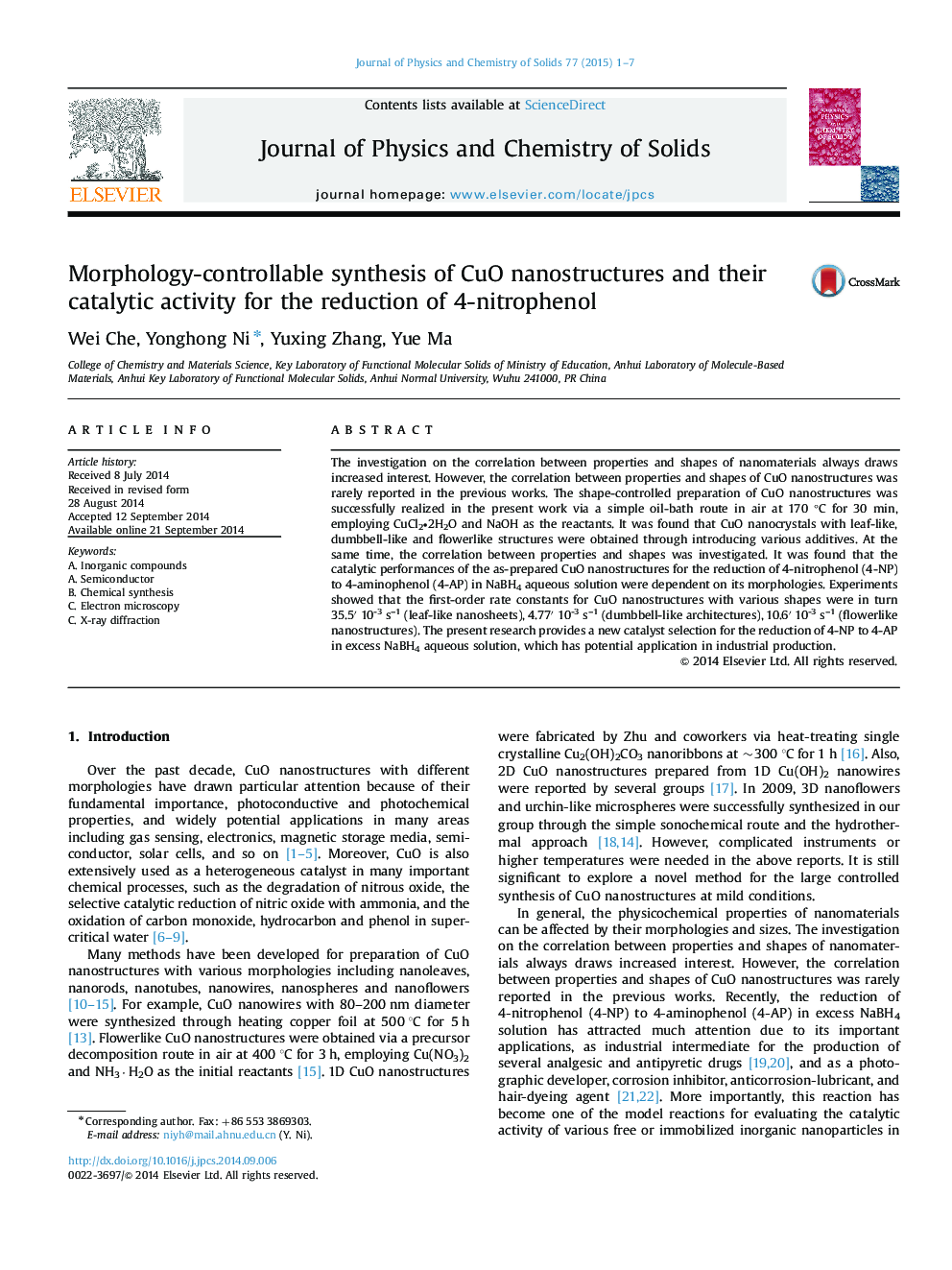| Article ID | Journal | Published Year | Pages | File Type |
|---|---|---|---|---|
| 1515589 | Journal of Physics and Chemistry of Solids | 2015 | 7 Pages |
•Morphology-controllable synthesis of CuO nanostructures was realized by a simple reflux route.•Leaf-, dumbbell- and flower-like CuO was obtained via adding various additives.•The as-prepared CuO exhibited good catalytic activity for the reduction of 4-nitrophenol.•Leaf-like CuO nanocrystals presented the strongest catalytic ability to the reduction of 4-NP.
The investigation on the correlation between properties and shapes of nanomaterials always draws increased interest. However, the correlation between properties and shapes of CuO nanostructures was rarely reported in the previous works. The shape-controlled preparation of CuO nanostructures was successfully realized in the present work via a simple oil-bath route in air at 170 °;C for 30 min, employing CuCl2∙2H2O and NaOH as the reactants. It was found that CuO nanocrystals with leaf-like, dumbbell-like and flowerlike structures were obtained through introducing various additives. At the same time, the correlation between properties and shapes was investigated. It was found that the catalytic performances of the as-prepared CuO nanostructures for the reduction of 4-nitrophenol (4-NP) to 4-aminophenol (4-AP) in NaBH4 aqueous solution were dependent on its morphologies. Experiments showed that the first-order rate constants for CuO nanostructures with various shapes were in turn 35.5′ 10-3 s–1 (leaf-like nanosheets), 4.77′ 10-3 s–1 (dumbbell-like architectures), 10.6′ 10-3 s–1 (flowerlike nanostructures). The present research provides a new catalyst selection for the reduction of 4-NP to 4-AP in excess NaBH4 aqueous solution, which has potential application in industrial production.
